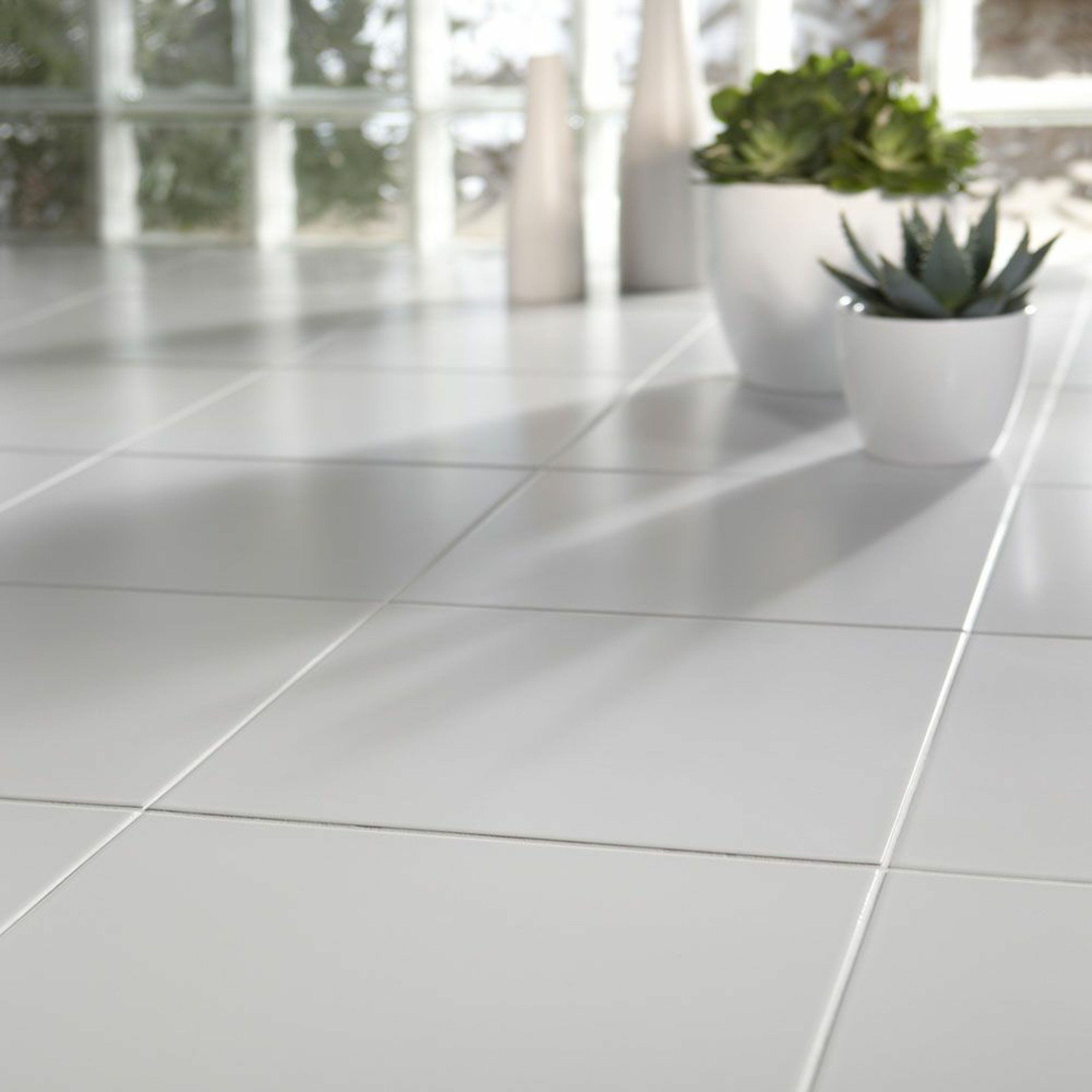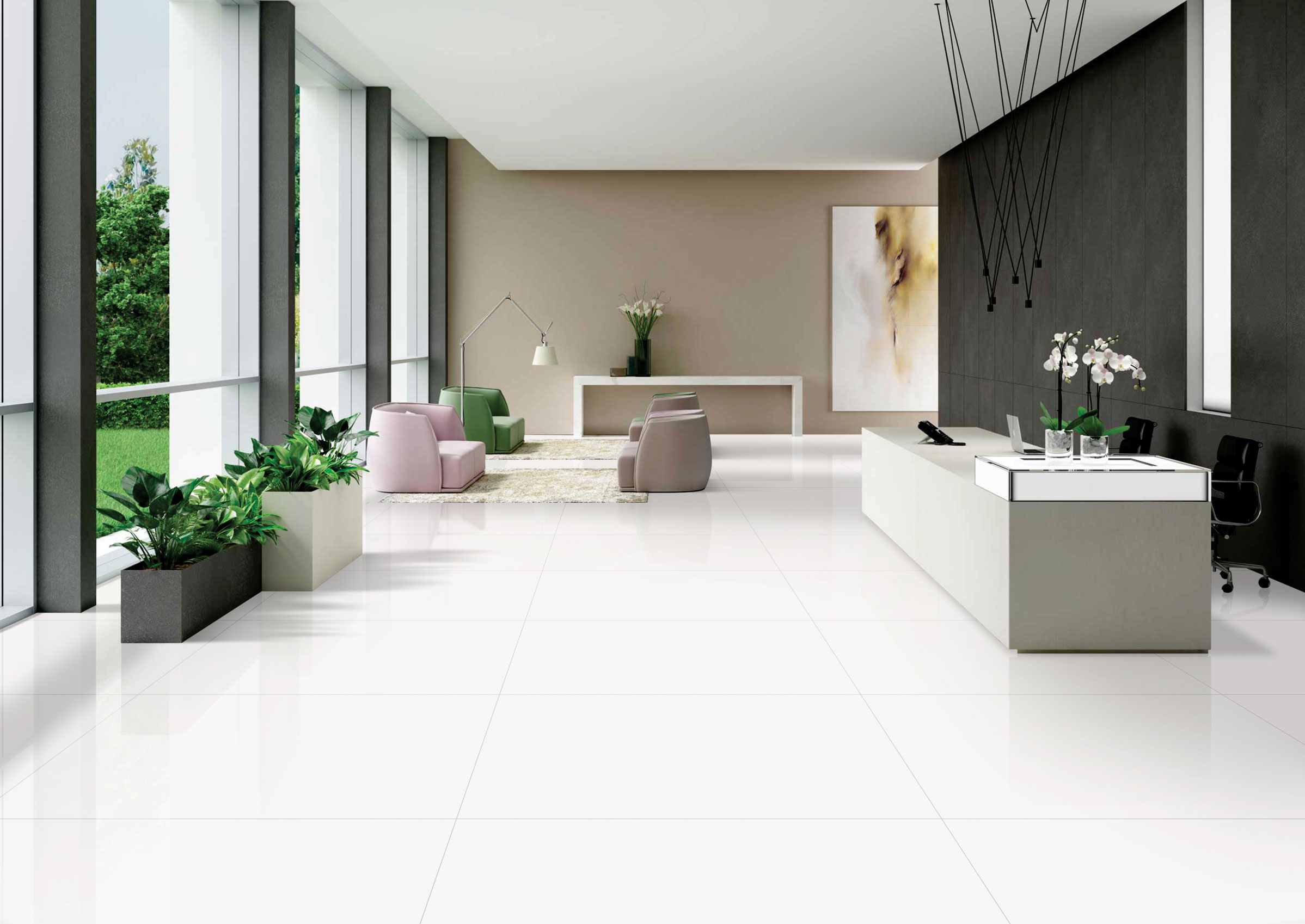Design Considerations

A white tile floor with white cabinets can create a clean, modern, and spacious feel in your kitchen. However, it’s crucial to consider both the advantages and disadvantages before making a decision.
White Tile Flooring Options
Choosing the right white tile for your kitchen is important. Different white tile options offer various aesthetics and practical benefits.
- Ceramic Tile: A budget-friendly option that comes in various styles and finishes, including matte, gloss, and textured. Ceramic tiles are durable and easy to clean, making them a popular choice for kitchens.
- Porcelain Tile: Known for its durability and water resistance, porcelain tile is a good choice for high-traffic areas. It’s available in various sizes, shapes, and finishes, including polished, matte, and textured.
- Subway Tile: A classic choice for kitchens, subway tile offers a timeless look and comes in various sizes and finishes. It’s versatile and can be used for backsplashes, floors, and even walls.
- Marble Tile: For a luxurious look, marble tile is a popular choice. However, it’s more expensive and requires regular sealing to maintain its shine and prevent staining.
Design Tips for a Visually Appealing Kitchen, White tile floor with white cabinets
To create a visually appealing kitchen with white tile floors and white cabinets, consider these design tips:
- Introduce Contrast: To avoid a sterile look, incorporate contrasting elements like dark countertops, wooden accents, or colorful appliances. This adds visual interest and depth to the space.
- Use Pattern and Texture: Play with patterns and textures in your tile choice, backsplash, or countertop to add visual interest and break up the monotony of white.
- Incorporate Natural Elements: Bring in natural elements like wood, plants, or natural fibers to create a warm and inviting atmosphere.
- Add Color Accents: Use colorful accessories, artwork, or textiles to add pops of color and personality to your kitchen.
Impact of Lighting
Lighting plays a crucial role in enhancing the overall look of white tile floors and white cabinets.
- Natural Light: Maximizing natural light by using large windows or skylights can make the space feel brighter and more inviting.
- Artificial Light: Use a combination of overhead and task lighting to create a well-lit and functional kitchen. Recessed lighting can provide general illumination, while under-cabinet lighting can highlight work areas.
- Warm vs. Cool Lighting: Warm white lighting can create a cozy and inviting atmosphere, while cool white lighting can make the space feel more modern and crisp.
Practical Considerations

While white tile floors and cabinets offer a clean and classic aesthetic, it’s crucial to consider their practicality before committing to this design choice. The bright, reflective nature of white can accentuate imperfections and require consistent maintenance to maintain their pristine appearance.
Maintenance and Cleaning
White tile floors are known for their easy maintenance, but they require regular cleaning to prevent dirt and grime from becoming noticeable.
- Pros: White tile floors are generally easy to clean and maintain. They are non-porous, making them resistant to stains and bacteria.
- Cons: White tile floors can show dirt and grime more readily than darker floors. Regular sweeping, mopping, and grout cleaning are essential to maintain their pristine appearance.
Staining and Scratches
White tile floors are susceptible to staining, especially from spills or foot traffic. Scratches can also be more noticeable on white tile, particularly in high-traffic areas.
- Staining: While white tile is generally stain-resistant, spills should be cleaned up promptly to prevent staining. Darker stains may require specialized cleaning products.
- Scratches: White tile is relatively scratch-resistant, but high-traffic areas may show wear and tear over time. Using protective floor mats and avoiding abrasive cleaning tools can help minimize scratches.
Cleaning Routine
Maintaining the pristine appearance of white tile floors and cabinets requires a consistent cleaning routine.
- Daily: Sweep or vacuum the floors to remove dust and debris. Wipe down cabinet doors and handles with a damp cloth.
- Weekly: Mop the floors with a mild cleaning solution. Clean grout lines with a grout cleaner.
- Monthly: Deep clean the floors and cabinets with a stronger cleaning solution. Use a sealant on the floors to protect against stains.
Durability of Tile Materials
Different white tile materials offer varying levels of durability.
- Ceramic Tile: Ceramic tile is a popular choice for floors due to its affordability and durability. It is generally resistant to scratches and stains, making it suitable for high-traffic areas.
- Porcelain Tile: Porcelain tile is denser and more durable than ceramic tile. It is also more resistant to moisture and stains, making it ideal for kitchens and bathrooms.
- Natural Stone Tile: Natural stone tile, such as marble or granite, is a luxurious choice that adds elegance to any space. However, it is more susceptible to scratches and stains than ceramic or porcelain tile, requiring careful maintenance.
Styling and Decor: White Tile Floor With White Cabinets

A white tile floor and white cabinets provide a blank canvas for creating a stunning kitchen. This timeless combination offers endless possibilities for personalizing your space and reflecting your unique style. By strategically incorporating color palettes, contrasting elements, and carefully selected accessories, you can transform this classic foundation into a kitchen that is both stylish and functional.
Color Palettes and Accents
When working with a white backdrop, the key to creating visual interest lies in choosing the right color palette and accents. Consider incorporating pops of color through various elements like backsplash, countertops, paint, and decor.
- Warm and Inviting: A warm color palette, such as soft yellows, oranges, and browns, can create a cozy and inviting atmosphere. For example, a warm yellow backsplash with a wooden countertop can create a sun-kissed feel, while a terracotta-colored rug adds a touch of earthiness.
- Cool and Contemporary: A cool color palette, such as blues, greens, and grays, can create a more modern and sophisticated look. A teal backsplash paired with a sleek, black countertop can create a dramatic effect, while a light blue accent wall adds a touch of serenity.
- Bold and Energetic: For a more daring look, incorporate bold colors like red, purple, or turquoise. A red island or a purple accent wall can create a statement piece, while a turquoise rug can add a pop of energy to the space.
Contrasting Elements
Contrasting elements are crucial for adding visual interest and breaking up the monotony of a white kitchen.
- Dark Countertops: A dark countertop, such as black, gray, or brown, creates a striking contrast against the white cabinets and floors. This combination adds depth and sophistication to the space.
- Metallic Accents: Metallic accents, such as gold, silver, or copper, can add a touch of glamour and sophistication to the kitchen. Incorporate these accents through hardware, lighting fixtures, or decorative elements.
- Wood Elements: Introducing wood elements, such as a wooden countertop, island, or shelving, can create warmth and texture, providing a welcome contrast to the clean lines of the white cabinets and tiles.
Accessories and Furniture Pieces
The right accessories and furniture pieces can elevate the overall aesthetic of your kitchen.
- Statement Lighting: A statement light fixture can instantly transform the mood and style of your kitchen. Choose a fixture that complements your chosen color palette and adds a touch of personality to the space.
- Unique Rugs: A rug can add warmth, color, and texture to your kitchen floor. Choose a rug that complements the overall style and color scheme of the space.
- Open Shelving: Open shelving can create a more airy and inviting feel, while also providing a space to showcase your favorite dishes, cookbooks, and decorative elements.
- Plants: Adding plants to your kitchen can bring life and vibrancy to the space. Choose plants that thrive in your kitchen’s lighting conditions and complement the overall aesthetic.
- Art: Don’t forget the power of art! A few strategically placed pieces can add a touch of personality and create a focal point in your kitchen.
White tile floor with white cabinets – Imagine a kitchen with a crisp white tile floor, gleaming white cabinets, and a touch of vintage charm. A white French country china cabinet tucked into a corner, filled with delicate porcelain and family heirlooms, would add a touch of timeless elegance.
The contrast of the white tile and cabinets against the intricate carvings and soft curves of the cabinet would create a visually stunning and inviting space.
A white tile floor with white cabinets can be a clean and classic look, but sometimes it needs a touch of warmth and personality. Why not add a couple of antique bedroom end tables for a vintage vibe? The intricate details and rich wood tones will add visual interest and create a cozy atmosphere, while still complementing the crisp white of the flooring and cabinetry.
